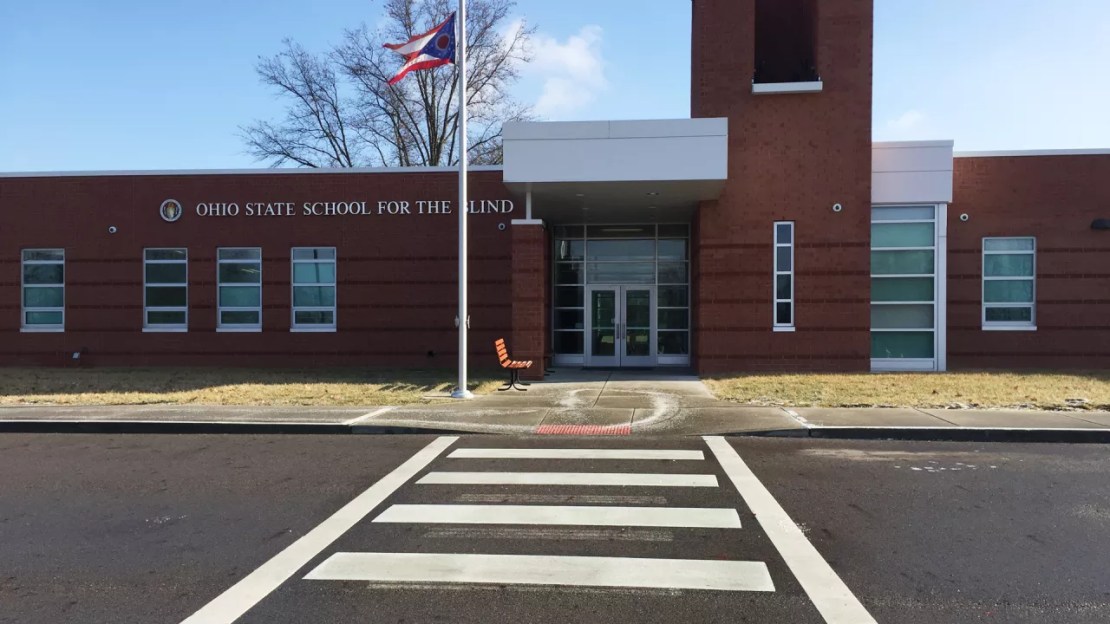Matthew Wood, April 20, 2018
Following the ?yellow brick road,? or any road, has never been possible for those without the power of sight? until now. An exciting new paint additive developed by OSU Materials Science Engineering Professor John Lannutti may prove to be the key to unlocking greater mobility and self-navigation for those who can?t see.
Lannutti?s ?smart paint,? which was developed in conjunction with New Jersey-based company Intelligent Material, works by triggering vibrations in the spatial awareness canes used by those with vision impairments. To test his invention, Lannutti partnered with The Ohio State School for the Blind (OSSB), which is located just up the road from the university in Columbus.
Lannutti and Intelligent Materials have added their smart paint product to much of the OSSB campus as well as a number of sidewalks and intersections throughout Columbus.
?It started off with John reaching out and saying, ?Hey, we?re doing this project, who are the right people to talk to??? says Mary Ball-Swartwout, an Orientation and Mobility Specialist for the OSSB. She that often items are developed for people with disabilities without input from those who will be the end users. ?We all were really excited about it, to give our feedback. It?s good to get to the source.?
OSSB has an enrollment of around 130 students, ranging from preschool to age 22. The residential school has a full campus of dormitories and other buildings. Even better, it has a number of streets, sidewalks and intersections for students to practice getting around - but no cars.
For Lannutti?s OSU team, this provided the perfect place to test out the new paint. ?For us, it?s wonderful that we can try out the paint without traffic or any other dangers,? he says.

Intelligent Material donated the ceramic oxide that is the active component of smart paint. A Georgia-based company called Crown Technology used that oxide to manufacture 3,500 pounds of smart paint. And the City of Columbus brought out the trucks and equipment needed and laid down the smart paint in 15 intersections and crosswalks on the Ohio State School for the Blind campus in Columbus
The research team is also hoping to get funding from the National Science Foundation to help with the project.
?We submitted a proposal to the NSF last year,? Lannutti says. ?They gave us some good comments. We didn?t get funded, but pretty close. So, we re-submitted this past February.?
He hopes to hear about funding by the end of summer. In the meantime, they?ll be working with OSSB on ways to make their product - and the lives of people with vision impairments - better. And, they have no shortage of volunteers to help with testing.
?When the smart paint got laid down on campus, all the [OSSB] students and staff were very excited and willing to be a part of the study,? Ball-Swartwout says. ?I have a couple students who, every time they see me, say, ?When will the new cane be coming? We can?t wait to try it!??
Crews apply the smart paint on the OSSB campus.
Lannutti has grand plans for making the product better. In addition to Columbus, he has partnered with the city of Tampa to use the smart paint on city intersections. From there, he hopes to be able to obtain data on the product.
?We?re planning on doing studies of what the paint does as a function of time,? he says. ?Things like salt interaction and dirt. We want to find out just how long does [the paint] last and how long can it be useful for the blind or visually impaired. This additive in the paint that makes it smart, it hasn?t been tested over time. That?s where we hope to come in.?
No matter what the product ends up becoming, the goal is to provide better opportunities for those with vision impairments.
?We?re really just focused on enriching our students? lives,? Ball-Swartwout says. ?Having more freedom to travel is a very simple, basic part of it. That?s what we do. We teach students how to travel and navigate the world. We want to make it more accessible and smooth for them to travel.?
The first step in doing that is to follow the paint.







